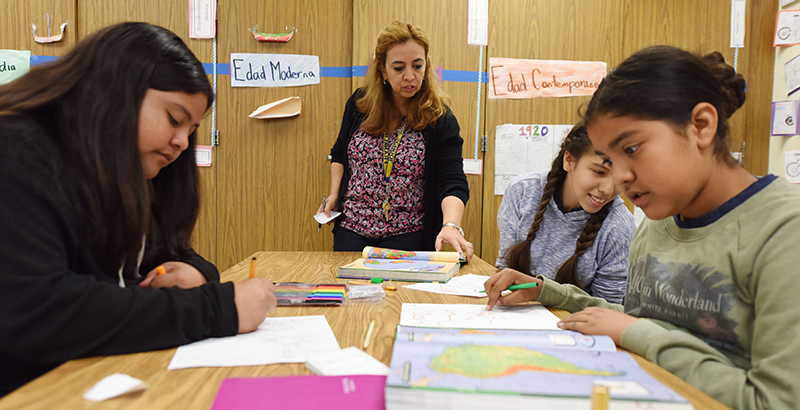Commentary: Finding Teachers Where They Live & Casting a Wider Net — How a New Recruitment Program Is Successfully Diversifying the Profession in California

A mounting crisis is playing out in California classrooms. Three-quarters of all state school districts report difficulties in recruiting teachers, a trend seen across the country. California is already ranked dead last in student-to-teacher ratios, and the state needs 100,000 additional teachers over the next decade, according to the Center for the Future of Teaching & Learning. Retention is also an issue; in urban districts, nearly 50 percent of new teachers leave the profession during their first five years.
Within this crisis is a deeper problem: California is struggling to find and retain teachers of color. Numerous studies show the importance of diverse educators in improving learning for both minority and white students, yet there is a dearth of such teachers and administrators in California schools. In fact, as of the 2016-17 school year, 63 percent of all teachers in California were white. As California’s classrooms increase in student diversity, so must its cadre of diverse, high-quality educators.
In 2015, the American Community Survey found that across the country, over half of American children ages 5 to 17 were white, as were nearly 80 percent of young teachers. However, just 13 percent of all school-age children were black, with black teachers comprising only 8 percent of the educator pool. And, while Hispanic students comprised around 24 percent of all school-age children nationwide, a mere 9 percent of teachers looked like them. Imagine how it is for young Hispanic students in California, who represented 54 percent of all K-12 students in the 2016-17 school year, to not see a significant number of Hispanic educators leading their classes every day. What message does this send?
The problem is multifaceted and complex — and so are the solutions.
The California Center on Teaching Careers works directly with school districts, institutes of higher education and teacher candidates across the state — and country — to implement best practices that place high-quality candidates in hard-to-fill positions. A key goal is to diversify the teacher candidate pipeline through innovative recruitment strategies like virtual job fairs that enable candidates, including those exploring alternate pathways into the field, to chat online with hiring agencies across California. Not only does this break down geographic barriers, it puts candidates from all backgrounds in direct contact with hiring agencies.
Many districts have also successfully implemented a grow-your-own model to specifically recruit teachers from the communities in which they live. For diverse and high-needs areas within California, this recruitment approach often results in an increase in the number of teachers who mirror area demographics and are familiar with, and invested in, the neighborhoods where they teach. At a hyperlocal level, hiring agencies have found success by recruiting directly in places where people gather — churches, community centers and local businesses — which often results in a candidate pool of teachers who truly represent the students they serve and understand the everyday issues they face. Some recruiters are also attracting candidates by removing barriers to entry by, for example, eliminating application fees, making meeting schedules flexible and offering child care at career events.
Partnerships are also a critical lever for diversifying the teacher force, particularly in subject areas that are challenging to staff. Currently, across the University of California and California State University systems, just 3 percent of science, technology, engineering and math majors are black and only 18 percent are Latino. The center’s $9.2 million CalEd grant program — with 32 district and school recipients in year one of a multiyear process — will support one such grantee, the Environmental Charter School in Inglewood, to hire a math coach for the school, utilize the UCLA Math Project to improve instruction and provide professional development in rigorous math support for all administrators, in addition to math teachers. The aim is to close the achievement gap among Latino and African-American students in science and math through the UCLA partnership, to increase a pipeline for minorities in STEM teaching positions.
Attracting teachers of color into the profession is essential as student populations in states like California continue to diversify and as the teaching shortage crunch persists. Districts and institutions of higher education must think outside the traditional recruitment box to effectively meet this need. That means forging innovative partnerships, identifying and then removing barriers to entry, and exploring new approaches to something as simple as a career fair.
Donna Glassman-Sommer is the executive director of the California Center on Teaching Careers, a program within the Tulare County Office of Education.
Get stories like these delivered straight to your inbox. Sign up for The 74 Newsletter

;)